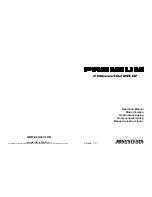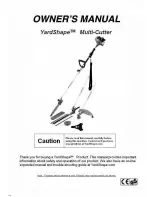
The lanyard may only be attached to a reliable anchor point,
a fall arrest harness or other components of the fall arrest system.
If the lanyard is supplied without karabiners and without energy
absorbers, please note the following: A lanyard without energy
absorbers according to EN 355 may not be used in a fall
arrest system, connectors (karabiners) for lanyards according to
EN 354 must comply with EN 362.
Lanyards may only be fastened to the catch eye of the harness
by means of the proper fastener (e. g. tie-in loop or lanyard at the
energy absorber); never connect a lanyard branch-off with lanyard
to the catch eye. If a lanyard is connected in Y-shape, the second
lanyard branch with lanyard may never be connected to carrying
elements of the catch harness (e. g. catch eye etc.) (Figure 9).
On Y-shaped products marked
the second lanyard branch
due to its design can be connected to carrying elements of the
catch harness.
If lanyards with length adjustment are employed, be sure to achie-
ve connection to the harness only by means of suitable lanyards
to EN 362/lanyards to EN 354 and that the adjustability is not
impaired thereby (Figures 5, 6)
Length adjustment must be made in a safe location that does not
present a falling hazard.
Several lanyards with integrated shock absorber may never be
used parallel to another.
Attention
: Generally, a karabiner may never be attached to several
parts of the same sling at the same time (Fig. 7).
On express strap loops several karabiners may not be attached to
one and the same quickdraw slings section (Fig. 8).
Attention
: Due to the strangeling hazard never hold your head
between connecting links or strap loop sections running in parallel.
Prior to using a fall arrest system, please ensure that the necessary
free space in the work area (unobstructed height) of 7 m under-
neath the user is provided for. Lanyards without energy absorbers
are used as restraint systems for work positioning. The range of
motion of the user should be limited so that there is no
possibility of him/her entering a fall risk area!
The Product has been tested for edge stability according to
appendix A of prEN 354:2008. This is communicated by the edge
symbol with the following meaning: The lanyard has been tested
successfully for horizontal application and fall across a deburred
90° steel edge with a radius of 0.5 mm. Therefore, the lanyard
can be used in combination with an energy absorber when similar
edges, for instance on rolled steel profi les or wooden planks, occur.
Nonetheless be alert to the following hazards: The lanyard has been
tested on a 90° edge (right angle). When edges with acuter angles
(lower than 90°, wedge shaped) occur, additional precautions
must be taken. An adjustable lanyard must not be adjusted while
moving in the area with acute falling hazard. If the lanyard is used
in connection with a class C anchor device according to EN 795,
the movement of the horizontal movable guide must be considered
when the clear height below the user is determined. Note that the
user may hit parts of a building when falling over an edge; an injury
hazard is thus entailed.
If the harness extenison „FIX“ is not used, fi x it in the rubber
clip provided for.
Lanyards for Adventure and Rope Parks according to EN 354
Adventure and rope parks
Caution! Use of this type of trad gear requires that the impact
forces hitting the highwire garden/adventure part system do
not exceed
6 kN
.
In fall risk areas, the lanyard may only be used in conjunction with
two simultaneously fastened karbiners. Karabiners may only be
moved from a secure position and must be done one after the
other so that one karabiner is always latched on!
When using this system with a harness according to EN 12277, the
lanyard must be attached to the attachment point of the harness
using an appropriate connection technique such as a girth hitch
(see Figure 1) or karabiners according to EN 362.
54526_GAL_Saf_Verbindungsmittel_MS_140513.indd 11
54526_GAL_Saf_Verbindungsmittel_MS_140513.indd 11
13.05.2014 12:31:36
13.05.2014 12:31:36












































